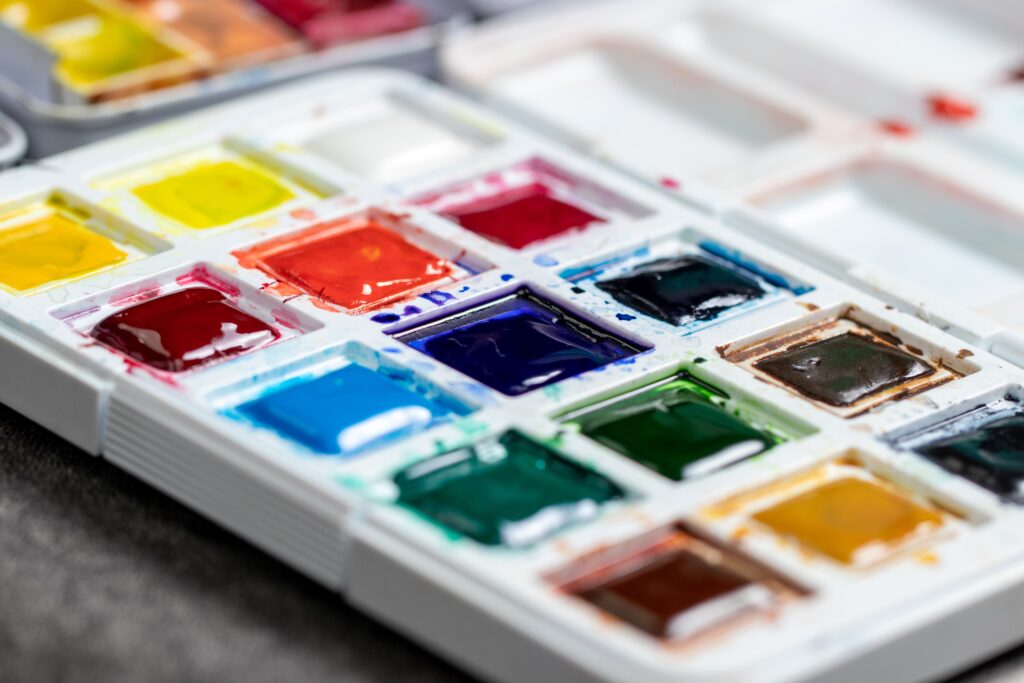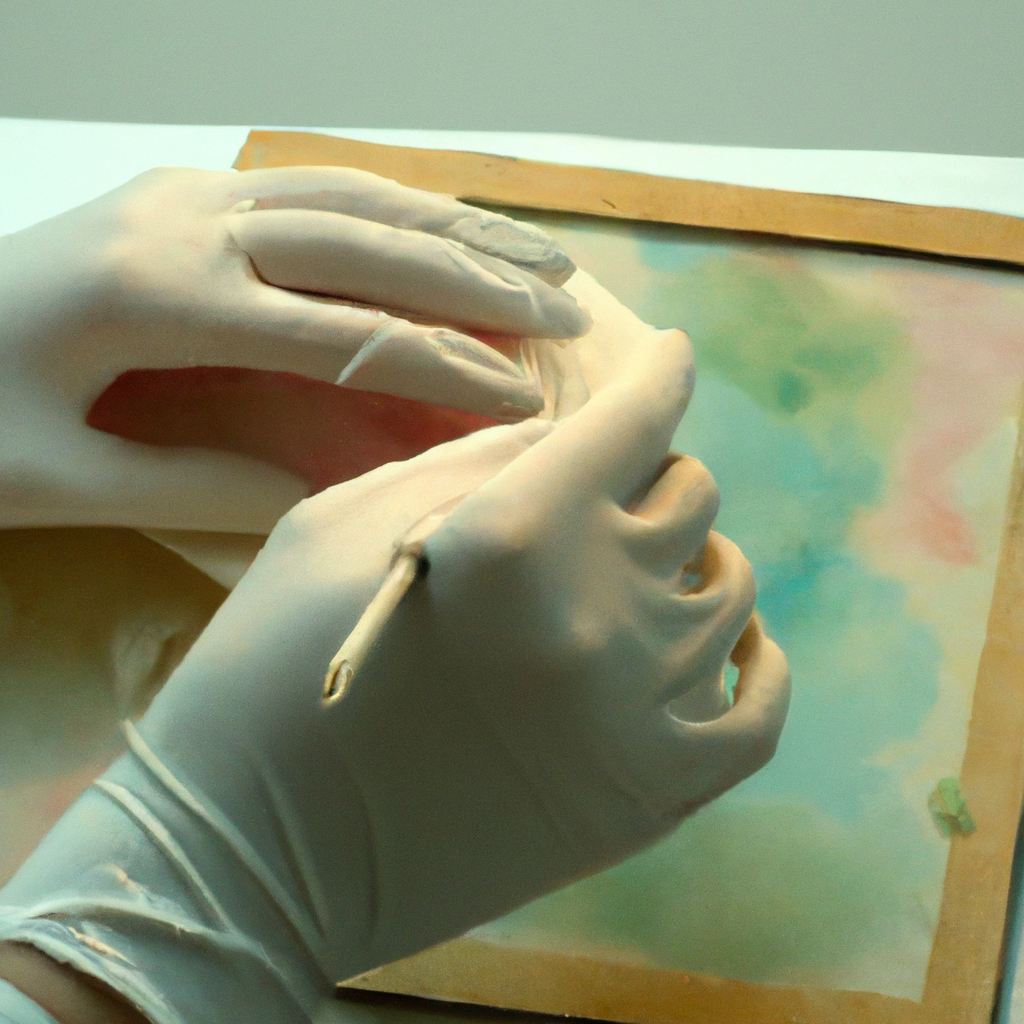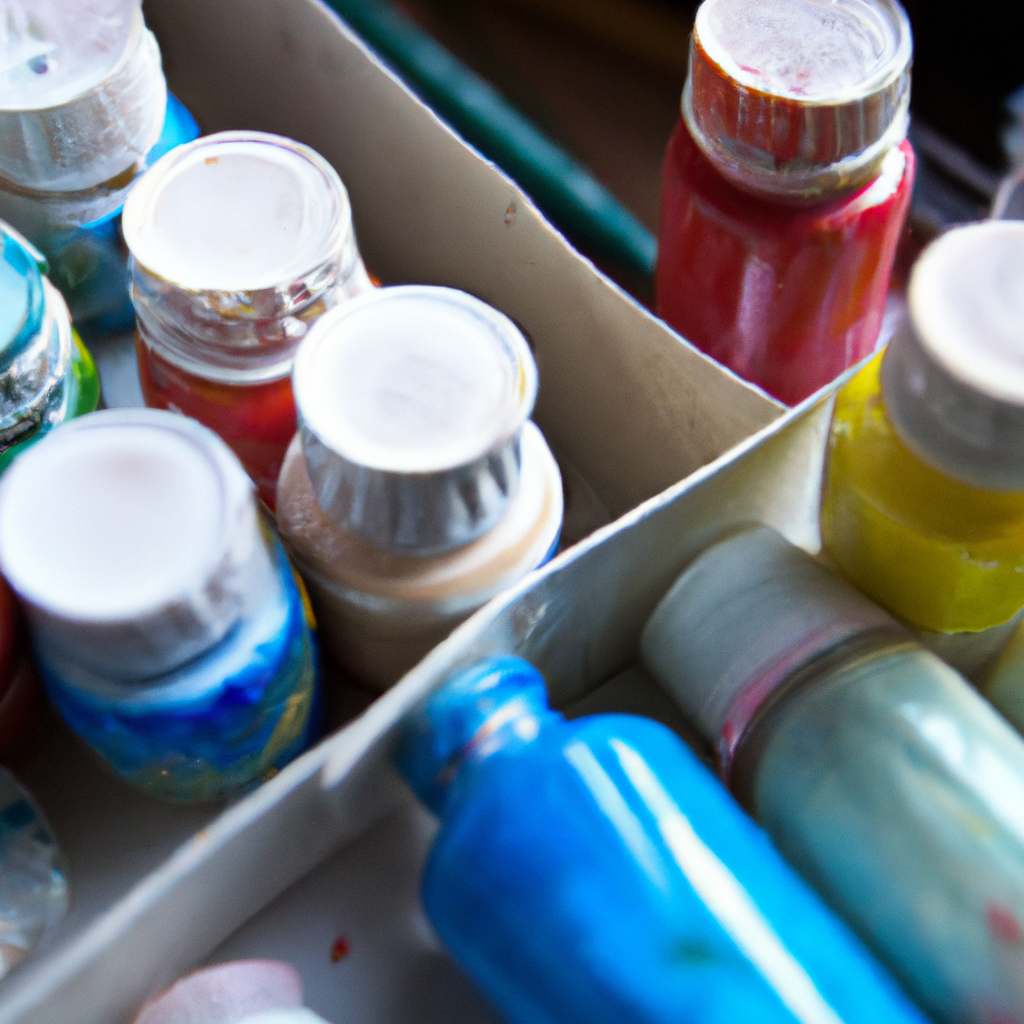Gouache, a versatile and popular medium among artists, typically evokes images of vibrant paintings on paper. However, have you ever wondered if it is possible to use gouache on canvas? In this article, we will examine the feasibility and techniques involved in painting with gouache on canvas, exploring its potential to create stunning works of art on this unconventional surface. Whether you are a seasoned artist or a beginner with a curious passion for experimentation, this article will provide valuable insights into the compatibility of gouache and canvas, unlocking new possibilities for your artistic endeavors.
Materials Needed
To paint with gouache on canvas, you will need the following materials:
Gouache Paint
Gouache paint is a type of water-based paint that is known for its opacity and vibrant colors. It is made from a combination of pigment, water, and a binding agent, typically gum arabic. Gouache paint comes in tubes or pans and is available in a wide range of colors.
Canvas
Canvas is the surface on which you will be painting. It is commonly made from cotton or linen fabric that is stretched and attached to a wooden frame. Canvas provides a sturdy and durable surface for painting with gouache.
Palette
A palette is a flat surface used for mixing and holding paint. When working with gouache, it is important to use a palette with a smooth surface that is easy to clean. Many artists prefer using a traditional wooden palette, while others opt for a disposable palette made from tear-off sheets of coated paper.
Brushes
Brushes are essential tools for applying gouache paint to the canvas. It is recommended to have a variety of brush sizes and shapes to create different effects and details in your artwork. Synthetic brushes are commonly used for gouache painting due to their ability to hold the paint and create precise strokes.
Water
Water is necessary for diluting gouache paint and achieving the desired consistency. It is important to have a container of water nearby while painting to clean brushes and thin out the paint when needed.
Palette Knife
A palette knife is a flat, blunt knife-like tool that is used for mixing paint and creating textured effects. While not essential for gouache painting on canvas, a palette knife can be helpful for achieving certain techniques and adding variety to your artwork.
Preparing Your Canvas
Before you start painting with gouache on canvas, there are a few steps you should take to prepare the surface.
Choosing the Canvas
When selecting a canvas for gouache painting, it is important to consider the size and texture. A stretched canvas is typically the best option for gouache, as it provides a smooth and even surface to work on. You can choose between different sizes and shapes of canvas, depending on your artistic vision.
Applying Gesso
Gesso is a primer that is used to prepare the canvas for painting. It helps to create a smooth surface and prevent the paint from seeping through the fabric. Before you start painting with gouache, apply a thin layer of gesso to the entire canvas using a large brush. Allow the gesso to dry completely before proceeding.
Stretching the Canvas
If you are working with a canvas that is not already stretched, you will need to stretch it yourself. This process involves attaching the canvas to a wooden frame using staples or tacks. Stretching the canvas ensures that it remains taut and prevents it from sagging or warping while you paint.

This image is property of images.unsplash.com.
Preparing Your Gouache Paint
To achieve the best results with gouache on canvas, it is important to prepare your paint properly.
Selecting Colors
Before you start painting, consider the color scheme or palette you want to use in your artwork. Gouache paints come in a wide range of colors, allowing you to create vibrant and expressive compositions. Choose colors that complement each other and evoke the desired mood or atmosphere in your painting.
Mixing the Paint
Gouache paints can be easily mixed to create new colors or adjust the intensity of existing ones. Use a palette knife or brush to mix the paint on your palette, gradually adding water to achieve the desired consistency. Experiment with different color combinations and ratio to find the perfect mix for your artwork.
Adjusting Consistency
The consistency of gouache paint can vary depending on the desired effect you want to achieve. For most applications, gouache is used in a fairly thick consistency. However, you can also dilute the paint with water to create transparent washes or glazes. Adjust the consistency of the paint based on the technique you plan to use and the desired effect in your artwork.
Techniques for Painting with Gouache on Canvas
Painting with gouache on canvas allows you to explore various techniques and effects. Here are some popular techniques to consider:
Opaque Application
One of the main qualities of gouache paint is its opacity. To achieve an opaque application, apply the paint directly from the tube or use thick, undiluted layers of paint. This technique is ideal for creating bold, vibrant colors and strong contrasts in your artwork.
Layering Colors
Gouache paint is perfect for layering colors due to its fast-drying nature. Apply a layer of paint, let it dry, and then add another layer on top. This technique allows you to build up depth and dimension in your artwork, as well as create interesting color combinations.
Blending and Gradation
Gouache paint can be blended easily to create smooth transitions between colors. Use a soft brush and apply different colors side by side, then use a clean brush to gently blend the edges until the colors merge seamlessly. Gradation can also be achieved by gradually adding more water to the paint, creating a fade-out effect.
Creating Textures
With the use of a palette knife, you can create interesting textures and effects in your gouache paintings. Apply the paint with the palette knife in a thick, impasto manner to add texture and depth to certain areas of your artwork. Experiment with different techniques to achieve desired textures, such as stippling, scumbling, or sgraffito.

This image is property of images.unsplash.com.
Tips for Painting with Gouache on Canvas
When painting with gouache on canvas, keep these helpful tips in mind:
Start with a Sketch
Before applying paint to your canvas, it is advisable to make a preliminary sketch. This will help you plan the composition and placement of objects or figures in your artwork. A sketch will serve as a guide and give you a clearer idea of how to approach the painting process.
Use Thin Layers
While gouache can be used in a thick, opaque manner, it is also possible to work in thin, transparent layers. By diluting the paint with water, you can create translucent washes and glazes, allowing underlying colors to show through. This technique is useful for creating subtle shading and highlighting effects.
Work from Background to Foreground
When painting a complex scene or composition, it is often helpful to work from the background to the foreground. Start by establishing the background elements of your artwork and gradually build up to the foreground details. This approach allows you to maintain a sense of depth and perspective in your painting.
Clean Your Brushes Regularly
Gouache paint can dry quickly, especially when applied in thin layers. To prevent your brushes from getting clogged with dried paint, it is important to clean them regularly. Rinse your brushes in water between paint colors and thoroughly clean them after each painting session to maintain their performance and longevity.
Advantages of Gouache on Canvas
Painting with gouache on canvas offers several advantages that make it a popular choice among artists.
Vibrant Colors
Gouache paint is known for its intense pigmentation, allowing artists to create bold and vibrant colors. The opaque nature of gouache ensures that the colors remain vivid even after drying, making them perfect for creating eye-catching artworks.
Matte Finish
Unlike acrylic or oil paints, gouache dries to a matte finish. This characteristic gives your paintings a soft and velvety appearance, allowing the colors to retain their richness and subtlety without any distracting sheen.
Good Coverage
Gouache paint provides excellent coverage, even on dark or textured surfaces such as canvas. The opacity of gouache allows you to easily cover up mistakes or make corrections without the need for extensive layering.
Easy Corrections
One of the benefits of gouache paint is its reworkability. If you make a mistake or want to make changes to your artwork, simply rehydrate the dried gouache with water and make the necessary adjustments. This flexibility and ease of corrections make gouache a forgiving medium for artists.

This image is property of images.unsplash.com.
Challenges of Painting Gouache on Canvas
While gouache on canvas offers many advantages, there are also some challenges to be aware of.
Drying Time
Gouache paint dries relatively quickly. While this can be an advantage in terms of adding layers and making corrections, it can also pose challenges when blending or creating smooth transitions between colors. It requires careful planning and efficient work to achieve desired effects before the paint dries.
Limited Opacity
Although gouache is known for its opacity, it may not completely cover the texture or color of the canvas. The weave of the canvas and the underlying color may still show through, especially when using thin washes of gouache. This can affect the overall appearance of the artwork and require additional layers or adjustments.
Brush Marks
Due to the texture of canvas, brush marks may be more visible when using gouache compared to other painting surfaces. This can be especially challenging when aiming for a smooth and even finish. Careful brushwork and blending techniques are necessary to minimize the appearance of brush marks on the canvas.
Framing and Displaying Gouache on Canvas
Once you have completed your gouache painting on canvas, it is important to properly frame and display your artwork.
Matting and Framing
Matting and framing your gouache painting not only enhances its appearance but also protects it from dust, moisture, and damage. Choose a frame that complements the style and subject matter of your artwork and consider using a mat to create a border and prevent the glass from touching the surface of the painting.
Varnishing
While gouache dries to a matte finish, you may choose to varnish your artwork to enhance its longevity and protect it from fading or yellowing. Select a varnish specifically formulated for gouache paintings and carefully follow the application instructions to avoid damaging the delicate surface of your artwork.
Hanging the Artwork
When hanging your gouache painting, consider factors such as lighting, room temperature, and humidity. Ideally, display your artwork away from direct sunlight and in a controlled environment to prevent any deterioration or fading over time. Also, be sure to use appropriate hanging hardware to secure the frame and ensure the artwork is safely displayed.

Examples of Gouache Paintings on Canvas
Gouache on canvas can be used to create a wide range of artworks in various genres. Here are some examples:
Landscape Painting
Gouache paint is particularly well-suited for capturing the beauty of landscapes. The opaque nature of gouache allows for vibrant and expressive colors, while its versatility enables artists to depict a range of natural elements such as sky, mountains, trees, and water with ease.
Still Life
Still life paintings are a popular genre for gouache on canvas. The opaque quality of gouache allows for rich and detailed depictions of objects, textures, and lighting. Whether it’s a bowl of fruit, a vase of flowers, or an arrangement of everyday objects, gouache can bring still life compositions to life.
Portrait
Gouache on canvas can also be used to create stunning portraits. The matte finish of gouache provides a soft and smooth surface, ideal for capturing the subtle nuances of human features and expressions. Gouache allows for precise and delicate details that can bring portraits to life with depth and character.
Famous Artists Who Used Gouache on Canvas
Throughout history, many renowned artists have used gouache on canvas to create their masterpieces. Here are a few examples:
Henri Matisse
Henri Matisse, a leading figure in modern art, often used gouache on canvas in his later years. He utilized its vibrant colors and versatility to create bold and expressive compositions. Matisse’s gouache paintings on canvas beautifully showcase his distinct style and mastery of color.
Paul Klee
Paul Klee, a Swiss-German artist, was known for his experimentation with color and form. He frequently used gouache on canvas to create abstract and geometric paintings. Klee’s use of gouache allowed him to achieve precise shapes and intricate patterns, resulting in visually captivating artworks.
David Hockney
Contemporary artist David Hockney has also embraced gouache on canvas in his work. Hockney’s vibrant landscapes and portraits often feature intense colors and bold brushwork, which are accentuated by the opaque quality of gouache. His gouache paintings on canvas exemplify his unique style and creative vision.
In conclusion, painting with gouache on canvas offers artists a versatile and exciting medium to explore. By following the proper techniques and tips, you can create stunning artworks that showcase the vibrant colors, matte finish, and expressive qualities of gouache. Whether you prefer landscapes, still life, or portraits, gouache on canvas provides endless creative possibilities. So grab your materials and start painting with gouache on canvas to bring your artistic vision to life!




